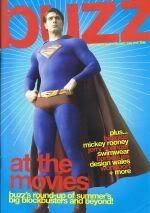Saw Week: Part V
Unsurprisingly, Saw V opens with a trap. A convicted murderer, who escaped a life sentence on a technicality, is chained to a table beneath a swinging blade. A slightly strange Billy tape tells him that in order to stop the pendulum from slicing him in half, he must crush his hands in vices – but when he does, nothing happens. The pendulum continues to descend, slicing him in half. Although it looked like a Jigsaw trap, it wasn’t: it was the work of Detective Mark Hoffman, and it took place several years ago. Saw V is about to significantly rewrite Saw history, and in a shockingly skillful way.
Since the first one, the Saw movies have been teaching us to be careful with the assumptions we make about what we’re seeing: people aren’t who they seem, and things may not be happening the way we think they are. Jigsaw’s ex wife, Jill Tuck, even explicitly tells us, more than once, not to take anything for granted: “John’s life defies chronology and linear description”, she says in Saw IV. That’s only going to seem more significant as things progress. Because it turns out that everything we thought we knew wasn’t quite true.
The action of V picks up at the end of III. Special Agent Strahm finds Jigsaw’s lair just as Jeff murders Jigsaw, and shoots him … but soon finds himself in a trap of his own, a box filled with water where the only way to survive is to punch a hole in his trachea with a helpfully supplied tube. Ouch. He does survive, though, as backup arrives just in time to see a soggy Hoffman carrying Jeff’s daughter to safety. Hoffman is lauded as a hero; Strahm is taken off the case for forging ahead without backup (and, sensibly, because he obviously needs some time to recover from his ordeal). Like everyone else who ever comes into contact with Jigsaw though, Strahm is obsessed, and no orders could ever really take him off the case.
Finally, a good 20 minutes in, the movie’s main trap is revealed: six people are chained by their necks to a winch, with the keys to their collars in glass boxes in front of them. But by struggling towards the boxes, they pull one another’s shackles tighter – and there are nasty blades behind each of their heads. Jigsaw’s video tells them that the reason they’re there is that they’ve all squandered advantages of birth by selfishness, and the only way to win is to work together. Naturally, they don’t listen, and as they progress through the maze, each trap kills another one of them, so that, at the finale, there are only two of them left. The twist? Co-operation was the only way to win, and by killing each other, they’ve thrown away their chance to survive. (Or, maybe: it’s not clear whether the two final test subjects actually die or not, though it doesn’t look good.)
That’s not the interesting bit, though. What's interesting about Saw V is the way the stories of Detective Lieutenant Mark Hoffman and Jigsaw’s ex wife Jill Tuck unfold. See, it turns out that Amanda wasn’t Jigsaw’s only accomplice – she wasn’t even his first. Hoffman created the pendulum trap to punish someone he thought had escaped justice, the man who murdered his sister. But because he wasn’t really on board with Jigsaw’s “everyone deserves a chance to chop bits of themselves off to discover their purpose in life” manifesto, he made an unwinnable game, and Jigsaw wasn’t impressed. He kidnapped Hoffman, forced him through a game of his own, and then basically adopted him. Hoffman was there from the beginning, supplying Jigsaw with the police records to select his victims and helping him build the traps. Hoffman is instrumental throughout; every time in a previous movie where something seemed like too much physical exertion for a terminally ill cancer patient to perform, it’s because Hoffman was doing it. Every time Jigsaw seemed to be in more than one place at the same time, it was Hoffman helping him. And now that John Kramer is dead, it’s down to Hoffman to finish Jigsaw’s final games – including trapping Agent Strahm and framing him as Jigsaw’s accomplice in the process. It’s breathtakingly daring, the way he pulls it off, and Strahm’s end is one of the franchise’s nastiest moments.
Stylewise, Saw V is littered with Argento references, but they’re far more subtly integrated than the franchise’s earlier horror references (e.g. in Saw II, Jigsaw directs Det Matthews to “the last house on the left”). The pendulum trap is straight out of The Black Cat, and the close-ups on Hoffman’s black leather gloves recall … well, most Argento films, really, but neither of these things seem particularly obtrusive in context. Director David Hackl doesn’t bother with Bousman’s obnoxious green and yellow palette, instead going for a more common teal-and-orange colour scheme for most of the movie, and the quick cutting has calmed down considerably. So far, Saw V is probably the best photographed film of the series, and the cleverness of the writing is astounding.
Honestly, I expected to be flagging by the time I got this far; I usually find it an uphill battle to get beyond the third movie in any horror franchise, because by most franchises have degenerated into exercises in making money off established names. But after Saw V, I was excited to revisit Saw VI … and even more excited to see Saw 3D (or Saw VII, as I may start calling it, in defiance of its actual, confusingly numbered title).











1 comment:
But because he wasn’t really on board with Jigsaw’s “everyone deserves a chance to chop bits of themselves off to discover their purpose in life” manifesto
ACTUAL LOL. Also, I kinda want to watch this film now.
Post a Comment